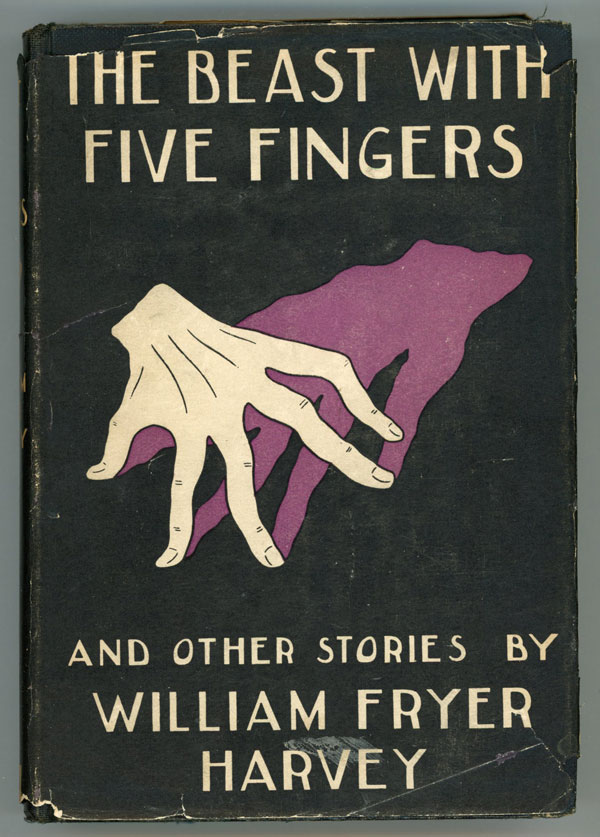Book Review: The Beast with Five Fingers by W.F. Harvey
W.F. Harvey (1885-1937) was born in Yorkshire, of Quaker family, and became a doctor. However, his health was poor and he was often unable to practice, so he wrote short stories on the side, many of them falling generally into the “weird” category. This volume collects stories from all of his collections, including the posthumously published “Twelve Strange Cases.”

The title story is perhaps the best-known. Eustace Borlover discovers that his blind uncle Adrian’s right hand has begun writing on its own. After his uncle’s death, Eustace receives the severed hand in the mail. According to the solicitor, a new codicil was found to Adrian’s will, asking that the hand be severed and sent to Eustace as part of his inheritance.
It soon emerges that the hand is alive in some sense, intelligent, very mobile, and a master forger. Eustace and his secretary immediately assume the hand is evil, but to be honest it seems more mischievous than malevolent. Until, of course, Eustace nails the hand to a board and sticks it in a safe for several months. I’d be inclined to swear vengeance after that myself.
After that comes a final showdown between men and appendage. It’s one of the best severed hand stories out there.
It’s also one of Dr. Harvey’s least ambiguous stories. Many of them leave some doubt as to what’s really going on, or what happened at the ending. The best example in this volume is “The Clock” wherein a young woman finds a clock ticking in a situation where it should be fully wound down. Is our heroine a very sensible young woman who would survive a horror movie by vacating the premises as soon as the spooky stuff starts happening but before the monster strikes? Or is she a nervous ninny who panicked over perfectly mundane and explainable phenomena? She’ll never know, and neither will we.
Dr. Harvey did not only write eerie stories; about half of the ones in this volume are observational humor. A couple of standouts in this area are “The Star”, in which an astronomer is amused by his wife’s recounting of a sermon about stars (the minister having clearly never asked an astronomer about their job); and “After the Flower Show” where a country doctor reveals the skullduggery involved in what on the surface looks like a quaint village festival.
There’s a couple of mentions of cockroaches in the cupboards at grand manors, and not even as an urgent problem.
The last part of the book is the “Twelve Strange Cases.” These are presented as the memoirs of a private nurse. The first story, “The Lake” opens very well with a statement that unless the story is published, the author’s life may be at risk. And indeed, the mysterious words uttered by her late patient do seem to pose a threat. Artists will catch on to the solution to the mystery faster than others, I think.
The other stories are a touch less exciting; I was very disappointed to find that “The Vicar’s Web” is the same story as the author’s “Unwinding”, about a parlor game gone horribly wrong, but with a slightly different framing sequence, found earlier in the collection. (“Unwinding” also appears in the book of thriller stories I reviewed a while back.) The collection finishes with “The Flying Out of Mrs. Barnard Hollis”, which may or may not involve astral projection.
Altogether, there’s 45 stories in the Woolworth Edition collection. Many of the stories are quite enjoyable, but keep in mind that it’s not all weird stories, so those readers looking only for that might not enjoy this.
There’s a movie adaptation of “Beast” which uses pretty much nothing but the mobile severed hand, but is nifty in its own right–here’s a trailer!

